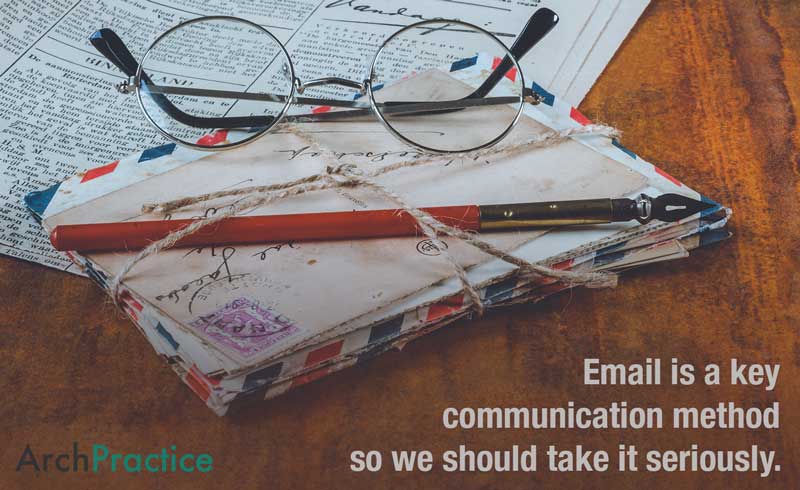A long time ago, I heard an architect (who is also a writer and educator) say that architects are horrible writers. While I don't think architects are terrible writers, I do think we can be lazy in our writing.
Perhaps it is fair that we have become lazy. We spent most of college developing our graphic communication skills through sketching, drafting, diagramming, and building models. Sure, we had to write some architectural history papers, but if you are like me, we wrote those to just get them done. We didn't spend time iterating the written word like we did on our design projects.
We're also in an era of short and assisted communication. We Tweet, we send auto-corrected text messages (with emojis), and we get hundreds of emails each day. We claim that we don't have time to create a proper written reply. Our phones even offer automatic short replies to save time.
I think we need to slow down a bit and try to improve our writing. Spend a little extra time on each email and text message to make it easier for the recipient to understand.
Here are a few observations, or perhaps I should call them rants. They are as much a reminder to me as they are suggestions to improve your written communications.
We are all Writers (with a capital W)
We spend a lot of our work day writing emails, annotating drawings, and making red-line markups. I'm sure every one of us writes at least 1,000 words of text every day. Many of you write more than that. That means you write a full novel every 60 to 80 days, which would be very prolific if you were a novelist. It is a key communication method so we should take our writing seriously.
"I wrote this on my phone" is a crappy excuse
This is complete BS. I'm sorry, but your phone has a screen so you can read that email before you send it. Your phone also has a back-space key that you can tap to erase errors. Read the email before you click send.
Speaking of phones, make a call
Pick up the phone and make a real call if you find yourself more than three paragraphs deep into an email. Make a call if you think there might be some confusion. Make a call if you seem to be replying back-and-forth on something that should be simple. A quick call will save everyone a lot of time.
Are you sure you need to Reply-All?
I think saying "thanks" when someone sends a detailed and helpful email is a nice gesture. However, keep in mind that we all get hundreds of emails each day. You don't have to Reply-All to thank them. Please double-check the TO: and CC: fields before you hit send.
Editing and proofreading is absolutely necessary
I will have read this newsletter four or five times by the time I click send. Each time, I try to fix mistakes and typos. But more importantly, I try to remove unnecessary words to make the email easier to understand. A clear message is important. Please read each email you send at least once and try to make it easier to understand. The recipient will appreciate the extra effort.
Nobody is perfect
We are going to make mistakes. We are going to send unclear direction. It is inevitable so we shouldn't beat ourselves up as long as we make an effort to be clear and concise.
We should also give the benefit of the doubt when we receive unclear emails. Politely ask for clarification when necessary. And please don't blast me for the inevitable errors in the text above.
If you are looking to improve your writing, check out our review of The Architect's Guide to Writing by Bill Schmalz. You can also read the iconic Strunk & White text, The Elements of Style.
